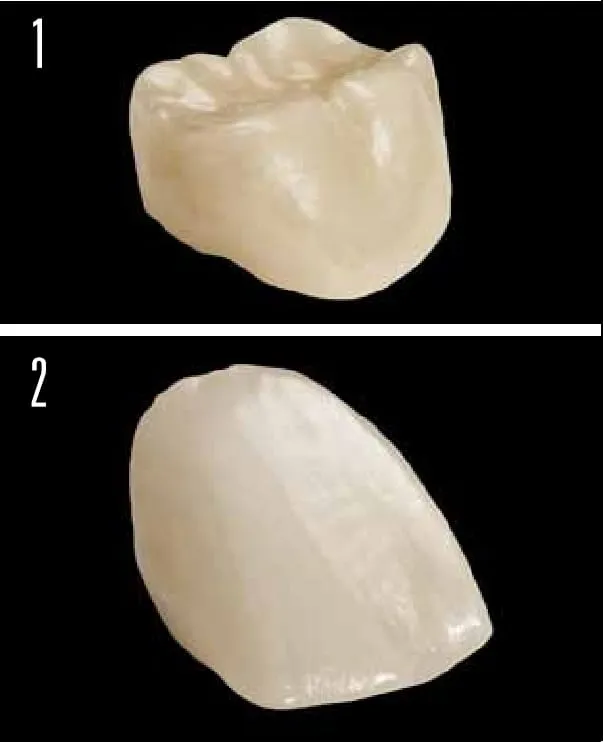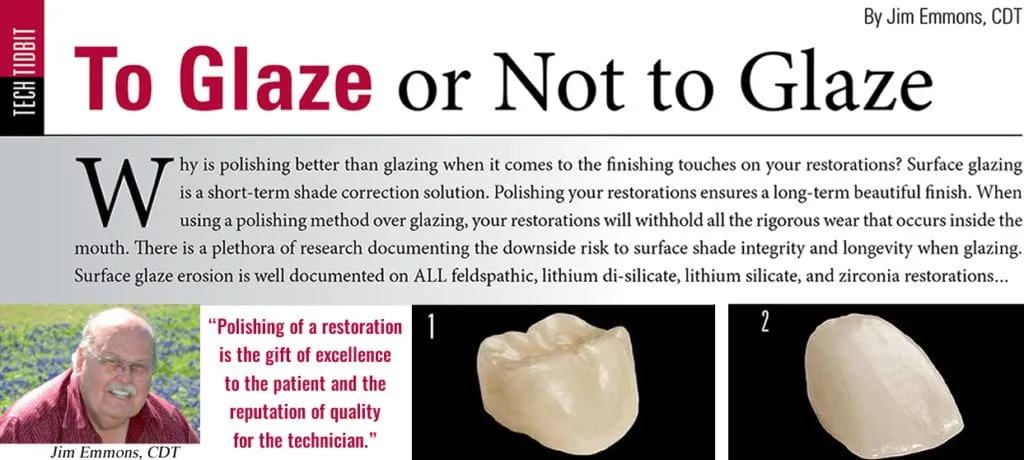Why is polishing better than glazing when it comes to the finishing touches on your restorations? Surface glazing is a short-term shade correction solution. Polishing your restorations ensures a long-term beautiful finish. When using a polishing method over glazing, your restorations will withhold all the rigorous wear that occurs inside the mouth. There is a plethora of research documenting the downside risk to surface shade integrity and longevity when glazing. Surface glaze erosion is well documented on ALL feldspathic, lithium di-silicate, lithium silicate, and zirconia restorations.
polishing of a restoration is the gift of excellence to the patient and the reputation of quality for the technician.
Several years ago I spoke at Loma Linda University Alumni Day with Dr. Gordon Christensen, the keynote speaker. In his opinion, surface glazing will last approximately two years. Glazed zirconia will have significant loss to the glazed layer when enduring the day-to-day wear in the human mouth. Physiologically, when using glaze, the fluxes in the ceramic dissolve and leave the surface similar to very abrasive sand paper causing significant wear to human enamel. As the surfaces erode, the ceramic crystal edges break and have an appearance of a file that chisels the opposing teeth. On the other hand, polished zirconia does not etch nor does the surface fracture and take on the appearance and characteristics of a file.
In 2011, Dr. D. Nathanson published an article distinguishing between polishing versus glazing of zirconia. He did a study at Boston University named, “1650 Human Enamel Wear Against Four Dental Ceramics in Vitro.” In this study, he found that “at 600,000 strokes, the polished zirconia caused significantly less wear to enamel than the glazed zirconia.” He also concluded, “the polished zirconia remained unchanged, but the glazed zirconia showed significant loss of the glaze layer.”
The advent of pre-shaded zirconia is making the benefits of polishing superior over glazing. Polishing takes less process time as you do not have to fire the restoration again. By the time you shade and glaze the restoration and then fire the crown again, glazing will add 40 minutes to your process time.
When determining how to finish your restorations, all the evidence points to polishing. Polishing of a restoration is the gift of excellence to the patient and the reputation of quality for the technician.

Fig. 1-2 Zirconia restorations that I polished using Z-Shine Diamond Polish. Both restorations took me less than 30 seconds to polish.
Article by: Jim Emmons CDT, FNBC
About the Author: Jim Emmons CDT, FNBC has developed many techniques for dentistry such as: The Spectrafire Air Brush System; Wet Palette Humidors; Patents on Ceramics & Porcelain Ovens; Life Essence Porcelain System; Biolume’ 24k Gold Bonder; Spectrafire Hydro –Vac Plus; and Spectrafire Golden Proportion System. Jim has published books such as The Aesthetic Edge: Bioluminescent Color and Ceramics and The Spectrafire Digital Shade Communication System.


